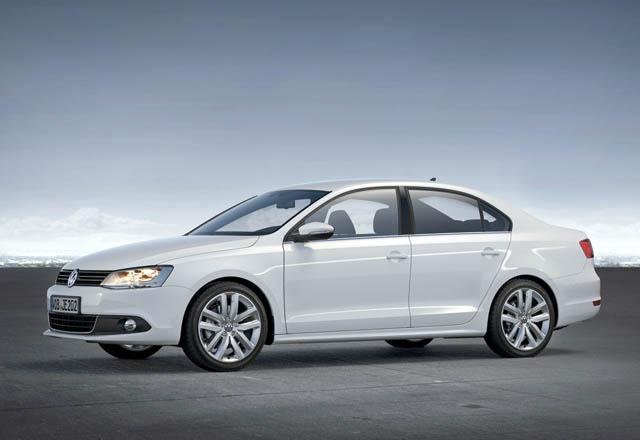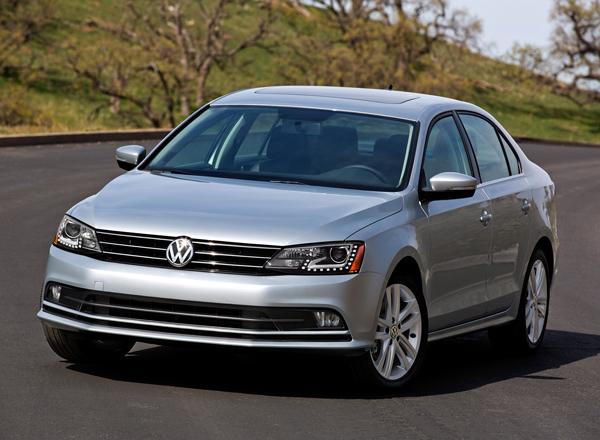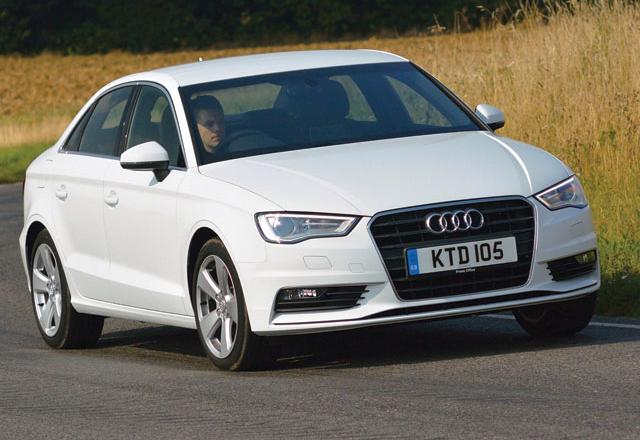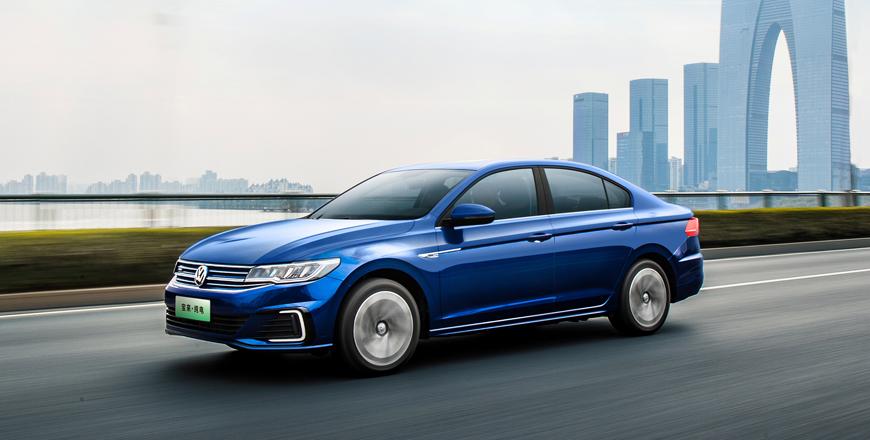You are here
Volkswagen Jetta 2.0: accessible and affordable
By Ghaith Madadha - Jun 09,2014 - Last updated at Jun 09,2014

Launched in 1979 to serve as the popular Volkswagen Golf’s saloon sister model, the Jetta’s evolution has taken it ever more up-market in tandem with successive Golf generations, and has been sold under the Vento and Bora names at various points. The current sixth generation Jetta, however, made a more noticeable break with the Golf when it was introduced in 2010. Based on a longer version of the fifth and now, previous generation Golf’s PQ35 platform but sharing no common body panels, the current Jetta is a larger, more practical, cost-effective and better value product intended for large sales volumes and to compete with Japanese and Korean C-segment saloons.
Conceived to be competitive
The Jettta was conceived and developed in conjunction between Volkswagen’s German headquarters and its long-standing Mexican operation to be a popular and competitive family saloon in the cut-throat US and world C-segment saloon market and as a more up-market car in Europe. Initially launched in two versions and built in Mexico to be competitively priced, the Jetta is designed to offer German engineering and brand values at a competitive price. While the Euro spec Jetta featured more luxurious interior appointments, more modern engines and a more sophisticated multi link rear suspension set-up like its predecessor, the US and world market version was designed with a more value- and volume-based approach in mind.
Intended to provide a compact German saloon car experience to a greater number of people at an affordable and competitive price, the US and world market Jetta was initially launched with subtly less luxurious upholstery and interior plastics, as well as less costly torsion beam rear suspension and less sophisticated but thoroughly proven drive-train options, including a naturally aspirated two litre eight valve SOHC four-cylinder engine — as tested — and six-speed automatic gearbox, rather than a dual-clutch automated DSG as fitted to pricier European versions. Volkswagen have however since introduced a more contemporary 1.8-litre turbo engine in the US, as well as reverted to the use of more sophisticated multi-link rear suspension.
Consistent and confident
Developing 114BHP at 5,200rpm and 125lb/ft at 4,000rpm, the Jetta’s long-serving two litre eight valve is a charismatic alternative and comparable to a more modern 1.6-litre engine, and with a proven track record, less complexity and lower fuel octane requirement, should be easier and less costly to run and service. A relatively low-revving engine, the Jetta’s two- litre engine doesn’t need to be thrashed too hard and delivers good low- and mid-range torque and flexibility. Consistent in building up power and torque, the Jetta feels confident driving in high gears on the highway and on inclines, while its six-speed gearbox is smooth shifting and can be operated sequentially for more direct control.
Weighing in at 1,331kg, the Jetta 2.0 automatic delivers respectable 12.6-second 0-100km/h acceleration and a top speed of 193km/h owing to good torque and aerodynamics, while combined cycle fuel economy is 8.72’/100km/h. Consistent in power delivery and with a strong mid-range, the Jetta 2.0 isn’t particularly fast climbing steep inclines, but it doesn’t lose steam, and instead progressively picks up the pace, while brakes grip confidently on the way down. Stable, planted and smooth at speed, the Jetta is typically and reassuringly German in this regard, while compliant suspension settings allow it to comfortably take imperfections, lumps and bumps and easily glide over longer and more gentle speed bumps.
Settled and smooth
Settled on the rebound from road texture changes, the Jetta’s comfortable suspension allows it to iron out imperfections, while its 205/55R16 tyres find a happy medium between pliancy and grip. With three-turn lock-to-lock steering, good visibility and 11.1-metre turning circle, the Jetta is maneverable in the city, while cabin refinement is high, with terrific road noise and vibrations filtered out well. Designed to be comfortable but not sporty, Jetta nonetheless availed itself well over a narrow, brisk and imperfectly paved route, where ride and handling were put to the test simultaneously.
Steering is well-weighted, progressive and delivers good precision, while turn-in is tidy as the front wheels grip well, while its longer wheelbase ensures good lateral grip too. Pushed somewhat hard through country switchbacks the Jetta becomes more confident and feels more agile, and while body lean is evident, it is well-controlled, progressive and not excessive. Un-dramatic and reassuring, the Jetta has good front grip, but being a front-drive car it will understeer slightly if pushed too hard or tightly though a corner, but this is easily corrected with slight throttle lift-off to bring its back to the desired cornering line.
Design, cabin and kit
Understated and conservative but elegantly and uncontroversially handsome, the current Jetta’s design is a sleeker, less pronounced, more mature design and with clean lines. Longer, wider and shorter than before, the current Jetta’s unfussed fascia bears a strong familial resemblance to other Volkswagen models, with its discreetly angled headlights sitting at almost the same height as its wide grille. Sober rather than extrovert, the new Jetta’s restrained lines are given movement by a subtle character groove above the sills, while its rear view is best. The Jetta also has strong hints of Audi, especially from rear views and around its trapezoidal rear lights.
During the test drive one was hard pressed to see signs of any cost-cutting in the Jetta’s handsome conservatively designed dashboard and centre console, where its prominently featured soft touch quality plastics, good fit and finish, and well laid out buttons. Signs of cost-cutting were discreet and subtle, with the doors’ interior plastics being of a harder texture. Spacious inside for its segment, the Jetta rear legroom is accommodating for taller passengers, while rear headspace was adequate. Front seats were comfortable and adjustability and visibility were good. Boot space is generous at 510 litres, while the boot opening was adequately — if not generously — sized.
Starting from JD23,950 for the basic S version and JD28,500 for the better kitted SE version — on-the-road without insurance — as tested, the latter comes well-kitted with sensible and practical features. Kit includes multifunction steering wheel, all-round electric windows, cooled glovebox, electronic immobiliser, cruise control, sunroof, parking sensors, electric heated mirrors, touchscreen infotainment with six-CD changer and Bluetooth connectivity, and dual zone air conditioning with rear vents. Safety kit includes six airbags, traction control, anti-lock brakes, front and rear fog lamps and rear childseat Isofix latches. Warrantied for three years of unlimited mileage, the Jetta also comes with a free service package for three years or 45,000km.
SPECIFICATIONS
Volkswagen Jetta 2.0 (auto)
Engine: 2 litre, cast-iron block / aluminum head, transverse 4 cylinders
Bore x stroke: 82.5 x 92.8mm
Compression ratio: 10.3:1
Valve-train: 8-valve, SOHC, Multipoint fuel injection
Gearbox: 6-speed automatic, front-wheel-drive
Ratios: 1st 4.15:1; 2nd 2.37:1; 1.56:1; 4th 1.15:1; 5th 0.86:1; 6th 0.69:1
Reverse / final drive: 3.39:1 / 3.68:1
0-100km/h: 12.6-seconds
Maximum speed: 193km/h
Power, PS (BHP) [kW]: 115 (114) [85] @ 5,200rpm
Torque, lb/ft (Nm): 125 (170) @ 4,000rpm
Specific torque: 85.8Nm/litre
Fuel consumption, urban / extra-urban / combined: 6.78-/12.08-/8.72 litres/100km
Fuel capacity: 55 litres
Length: 4,644mm
Width: 1,778mm
Height: 1,482mm
Wheelbase: 2651mm
Track width, F/R: 1,542 / 1,539mm
Ground clearance: 139mm
Kerb weight: 1,331kg
Aerodynamic drag co-efficient: 0.30
Headroom, F/R: 970 / 943mm
Legroom, F/R: 1,046 / 967mm
Shoulder room, F/R: 1,401 / 1,362mm
Luggage volume: 510 litres
Steering: power-assisted rack and pinion
Steering ratio: 16.4:1
Turning circle: 11.1 metres
Lock-to-lock: 3.01 turns
Brakes, F/R: Ventilated disc 22 x 280mm / drum 32 x 230mm
Suspension, F/R: MacPherson struts / multi-link, coil springs, stabiliser bars
Tyres: 205/55R16
Price, starting / as tested: JD23,950 / JD28,500, on-the-road, no insurance
Related Articles
Conceived as a saloon car based on and complementing Volkswagen’s mainstay Golf hatchback, the Jetta has since 1979 seen several name change
Well-established, the executive prestige brand hatchback segment includes cars like the Audi A3, Mercedes-Benz A-Class, BMW 1-Series and Volvo V40, but with the junior executive saloon segment growing in size, price and luxury, a gap has opened in the compact luxury saloon segment.
A recent and gradually more popular arrival to the Jordanian market, the Volkswagen e-Bora follows in the footsteps of the prolific seventh

















